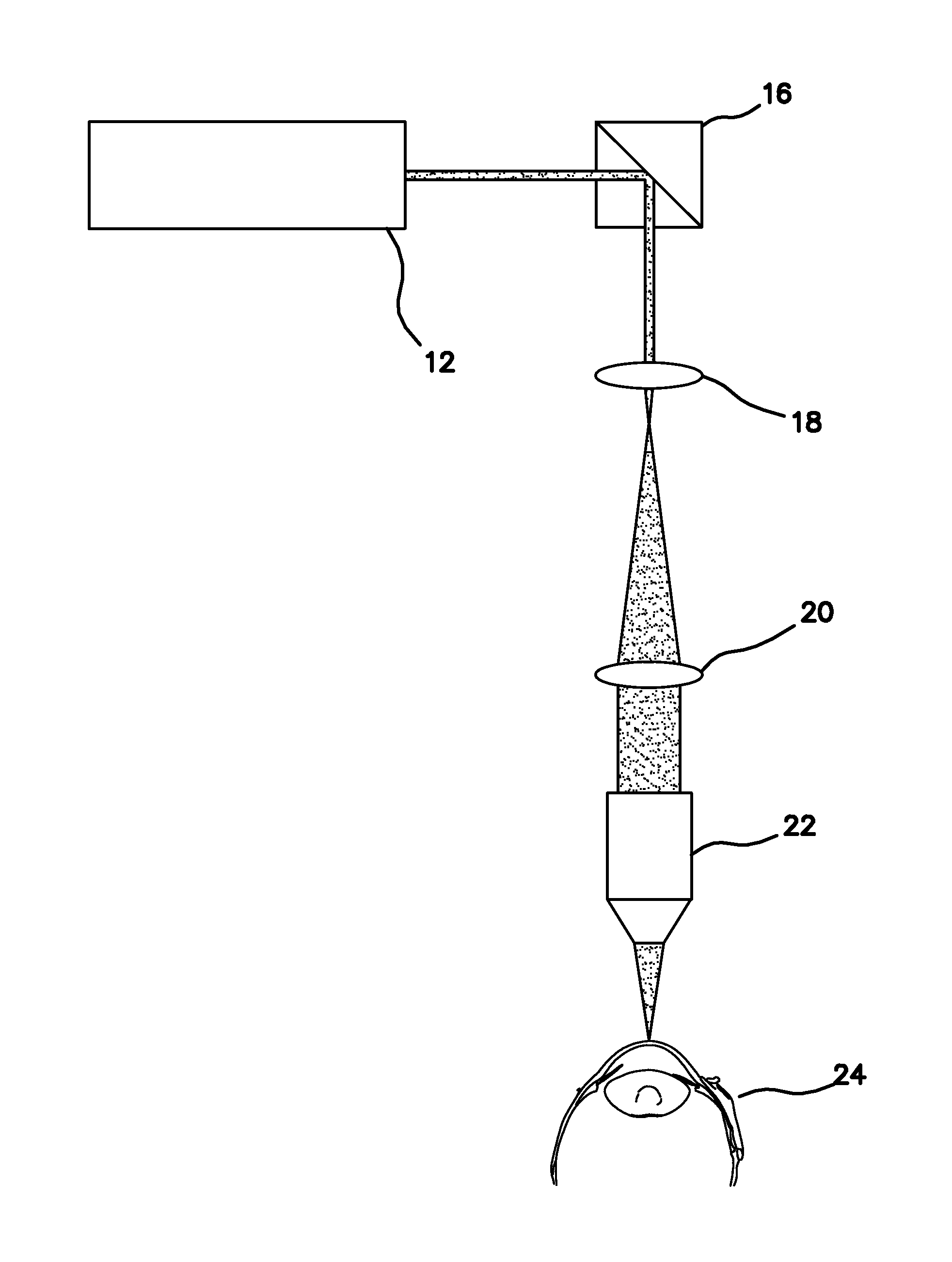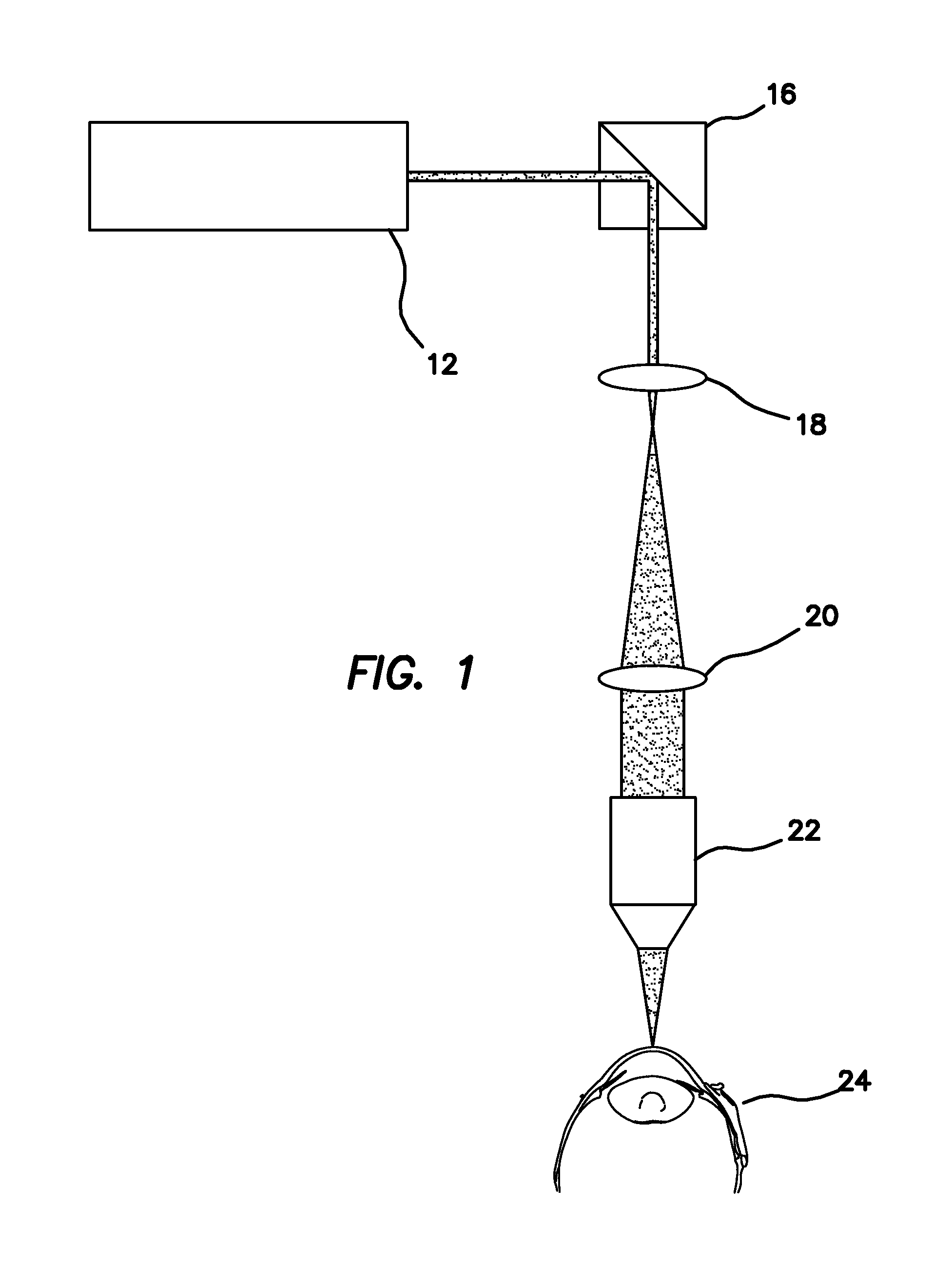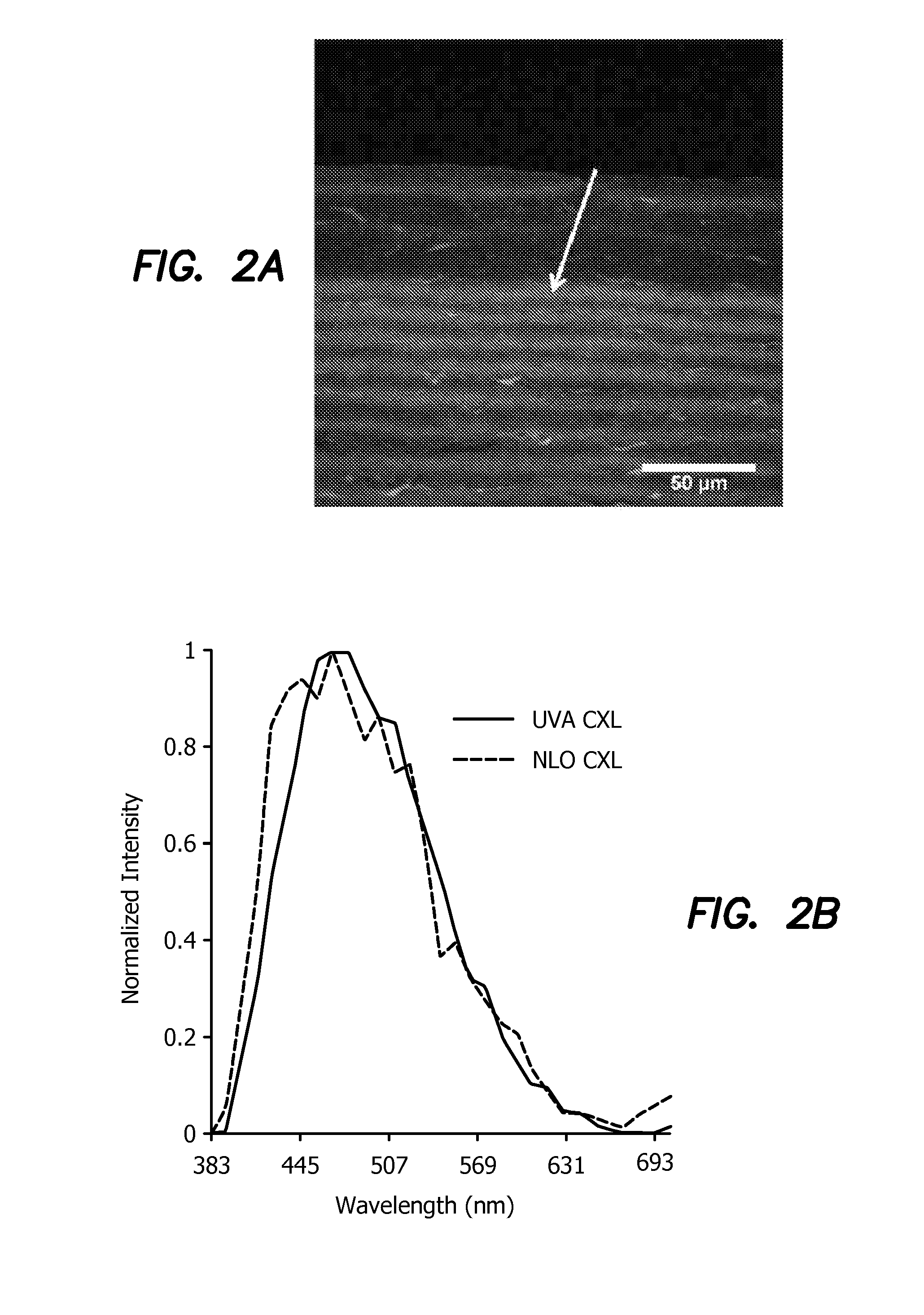Nonlinear optical photodynamic therapy (nlo-pdt) of the cornea
a nonlinear optical and corneal technology, applied in the field of using nonlinear optical photodynamic therapy (nlopdt), can solve problems such as non-focused light, and achieve the effect of anti-microbial and tumorcidal effects
- Summary
- Abstract
- Description
- Claims
- Application Information
AI Technical Summary
Benefits of technology
Problems solved by technology
Method used
Image
Examples
Embodiment Construction
[0043]It is known that collagen crosslinking can be caused using UV light and riboflavin in the cornea and that there is a correlation between collagen autofluorescence induced by crosslinking and the mechanical stiffening effects of UV-riboflavin. Autofluorescence is the natural emission of light by biological structures, such as mitochondria and lysosomes, when they have absorbed light, and is used to distinguish the light originating from artificially added fluorescent markers (fluorophores). We have established that collagen autofluorescence can be used to evaluate collagen crosslinking and that the intensity of autofluorescence is correlated with the amount of corneal stiffening. We have further developed preliminary data showing the NLO-PDT can induce increased corneal stromal autofluorescence in riboflavin soaked corneas. We also have data showing that NLO-PDT increases collagen gel stiffness, showing the proof of concept.
[0044]NLO-PDT uses very short pulsed laser light that ...
PUM
 Login to View More
Login to View More Abstract
Description
Claims
Application Information
 Login to View More
Login to View More - R&D
- Intellectual Property
- Life Sciences
- Materials
- Tech Scout
- Unparalleled Data Quality
- Higher Quality Content
- 60% Fewer Hallucinations
Browse by: Latest US Patents, China's latest patents, Technical Efficacy Thesaurus, Application Domain, Technology Topic, Popular Technical Reports.
© 2025 PatSnap. All rights reserved.Legal|Privacy policy|Modern Slavery Act Transparency Statement|Sitemap|About US| Contact US: help@patsnap.com



